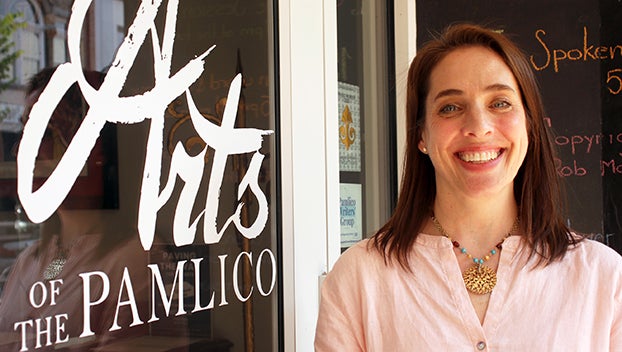The Widow Spy visits Washington
Published 9:26 pm Thursday, November 8, 2012

Martha Peterson, retired CIA operations officer, spoke at a Friends of the Brown Library event last Sunday about her career in espionage. Peterson, who retired to Wilmington, recounted stories from her book, “The Widow Spy.” (WDN Photo/Vail Stewart Rumley)
A bold-patterned jacket, hair done just so, combined with a smile that encompassed the room. The woman at the podium looked like a hip, young-at-heart grandmother, the kind who spoils her grandchildren rotten with no remorse whatsoever.
She did not look like a CIA spy.
Sunday, Martha Peterson spoke of her career in espionage and “The Widow Spy,” the book she has written revealing what life was like in Cold War Moscow in the 1970s.
The event, sponsored by Friends of the Brown Library, drew an appreciative crowd to First United Methodist Church’s fellowship hall. In the audience were veterans, former government employees, and widows of both, and when Peterson, first thing, asked how many in the crowd had ties to the intelligence community, a surprising number of hands went up.
Peterson, however, was not surprised. After 32 years with CIA, likely little surprises her.
Peterson didn’t set out to become a spy — she initially married an U.S. Army Special Forces officer who had been recruited by CIA during the Vietnam War. He was sent to Laos in 1971 to interdict war materials heading up the Ho Chi Minh trail. She went with him because families living there together gave the impression that “it was safe, that we (the U.S.) had it under control,” an impression the government was anxious to foster.
But Peterson came back to the states alone, after her husband was killed; his helicopter was shot down on a mission to infiltrate Lao troops. There her own story of becoming a CIA operations officer begins. She said it wasn’t easy — there were many in the agency skeptical of her success.
“It was more challenging for a woman in 1973 than for a man,” Peterson said.
Her first assignment: Moscow. But the skepticism her CIA colleagues had regarding a woman’s ability to spy worked in her favor, as the KGB apparently thought the same. Though she worked in the U.S. embassy under a cover, the KGB did not put her under surveillance.
“The KGB was simply not concerned about me or the other women in the embassy,” Peterson said.
This was how Peterson came to be one of the conduits for intelligence from every Russian embassy across the world making its way into American hands: images of thousands of documents taken by a mini camera hidden in a writing pen, stored on mini cassettes, that changed hands in the dead of night in a Moscow park.
Peterson’s book is part espionage memoir and part homage to her husband, as well as to the Russian spy, code name TRIGON, who smuggled intelligence out of the Secretariat, into Peterson’s hands.
“We worked together, although we never met,” Peterson said of her Russian counterpart.
Peterson retired to Wilmington and was encouraged by friends to write about the career spanning the Cold War to counterterrorism. It took her two years to get it all on paper and after meetings with agents and ghost-writers and the like, decided to self-publish.
“They say books are dead, but guess what? People are interested in learning,” Peterson told the audience, adding that she always reads the newspaper from end to end: “As an intelligence officer, that’s how you learn where you live.”
Martha Peterson’s book “The Widow Spy” is available on Amazon.com.





